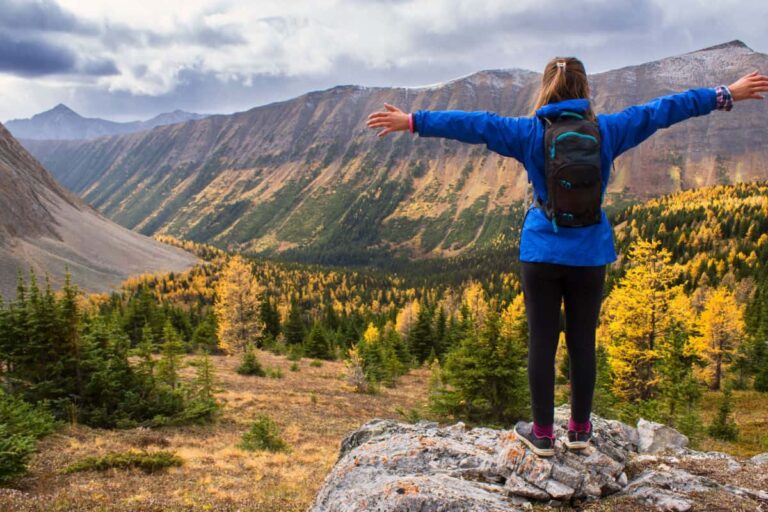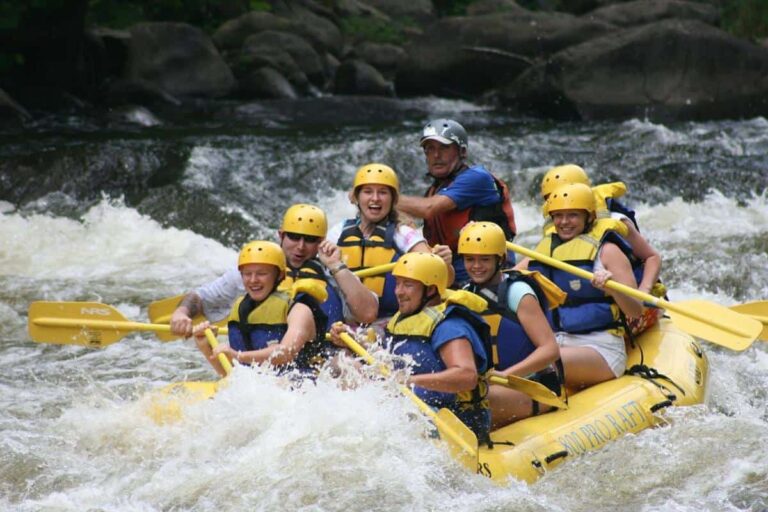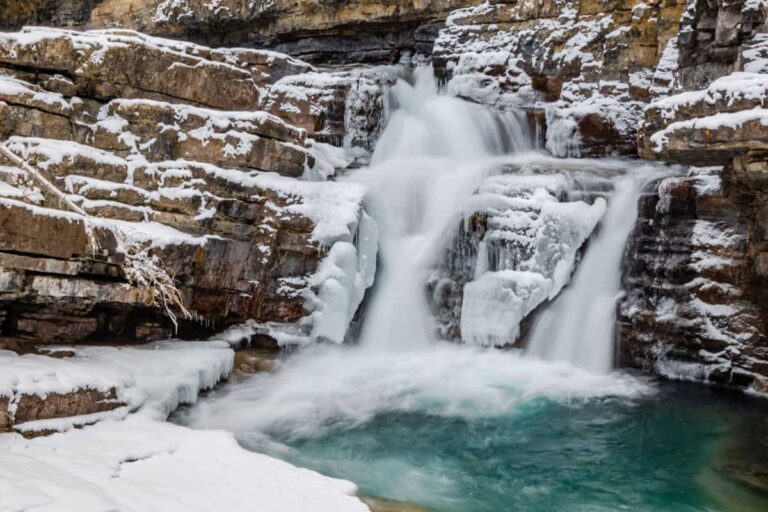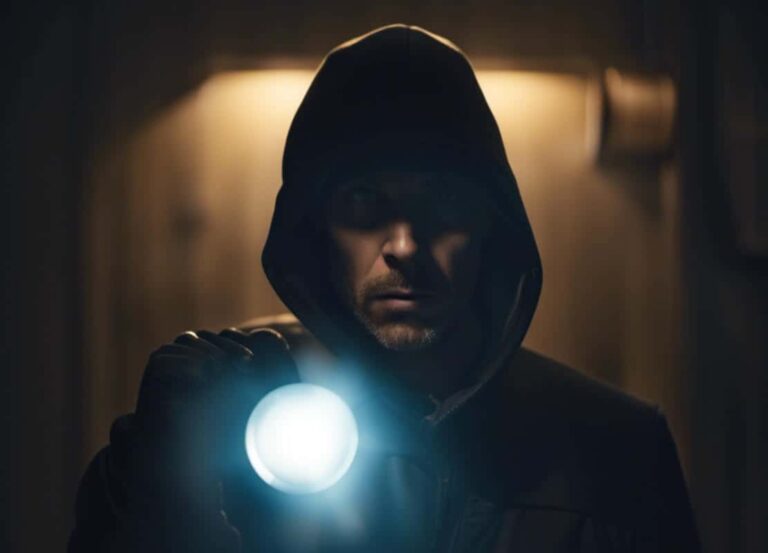Work in Banff, You Can too (Explained!)
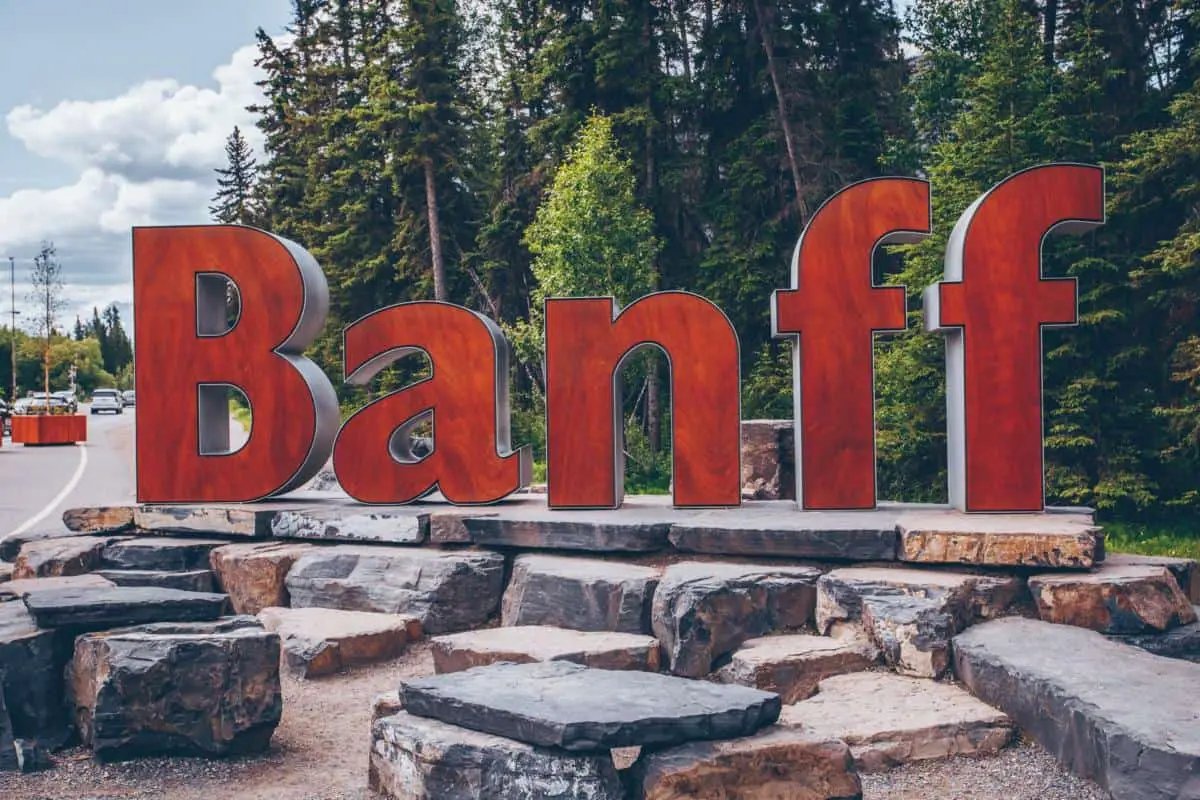
Banff is a stunning place to work. Located in the breathtaking Rocky Mountains, there are few nicer towns imaginable to make your living. Even as a foreigner, you can get a job there. Just sign up for the International Experience Canada (IEC) program.
Imagine, tourists in Banff keep coming and going, and you stay. You live like a local; you are a member of the library, the local hiking club, you have a discount card from the supermarket, you have a doctor and a group of friends. Sounds surreal? It doesn’t have to be. All you need is a work visa.
Why Working in Banff Is a Good Idea
Working in Banff is guaranteed to provide you with unique memories for the rest of your life. The location is breathtakingly beautiful and therefore attracts people from all over the world.
Many employees are foreigners, which often makes for interesting contacts. Residents of as many as 36 countries can get work visas in the IEC program. Not to mention the almost inevitable contact with countless tourists from the most diverse countries.
Especially in the summer months, the Rocky Mountains are a wonderful place to live and work. From June to August the weather is usually excellent. And because Banff lies in the middle of the Rockies, there are many outdoor activities you can do. Some of them are even accessible on foot.
Furthermore, the nightlife in Banff offers plenty of opportunities. There are several cafes (some with live music), restaurants, and nightclubs. Of course Banff’s nightlife can not be compared to that of a big city but there is enough to do to entertain yourself seven nights a week.
In addition, the small scale of Banff has a significant advantage: You quickly make several social contacts through colleagues at work. That and the great environment make you feel at home very quickly.
Also good to know is that you don’t need a car in Banff. I lived and worked in Banff for eight months and during that time I did everything on foot. It worked out just fine. If I wanted to go further afield for a day or a weekend, I hopped on a bus or rented a car.
If you’re not sure yet wether (temporarily) moving to Banff is a good idea, read this post about the pros and cons of moving to Banff.
What Kind of Work Visa’s Can You Get?
Now that you’re interested in working in Banff you might want to know how to obtain a work visa, eh? The IEC offers you three categories:
- Working Holiday Program
- Internship
- Young professionals
The Canada Working Holiday Program (CWHP) is probably your best option. The internship and young professionals categories have specific limitations. That’s why I focus on the CWHP in this article.
Let’s have a look at what is involved in getting the CWHP work visa, how long you have to wait for it, and what to expect once you arrive in Banff.
What Is the Canada Working Holiday Program?
The purpose of the Canada Working Holiday Program is pretty self-explanatory. Here, however, is a brief explanation:
The CWHP is a program for young adults who want to travel and work in Canada. It issues temporary work permits to men and women from over 30 countries. These allow you to live and work legally in Canada. The permits are valid for 12 or 24 months. The maximum duration depends on your country of origin.
Below is a list of all the countries Canada has an agreement with under the IEC program. In the table you will also find the maximum validity of the visa and the maximum age.
| COUNTRY | AGE LIMIT | NUMBER OF MONTHS |
|---|---|---|
| Andorra | 18 – 30 | 12 months |
| Australia | 18 – 35 | 24 months |
| Austria | 18 – 30 | 12 months |
| Belgium | 18 – 30 | 12 months |
| Chile | 18 – 35 | 12 months |
| Costa Rica | 18 – 35 | 12 months |
| Croatia | 18 – 35 | 12 months |
| Czech Republic | 18 – 35 | 12 months |
| Denmark | 18 – 35 | 12 months |
| Estonia | 18 – 35 | 12 months |
| France | 18 – 35 | 24 months |
| Germany | 18 – 35 | 12 months |
| Greece | 18 – 35 | 12 months |
| Hong Kong | 18 – 30 | 12 months |
| Ireland | 18 – 35 | 24 months |
| Italy | 18 – 35 | 12 months |
| Japan | 18 – 30 | 12 months |
| Latvia | 18 – 35 | 12 months |
| Lithuania | 18 – 35 | 12 months |
| Luxembourg | 18 – 30 | 12 months |
| Mexico | 18 – 29 | 12 months |
| Netherlands | 18 – 30 | 12 months |
| New Zealand | 18 – 35 | 23 months |
| Norway | 18 – 35 | 12 months |
| Poland | 18 – 35 | 12 months |
| Portugal | 18 – 35 | 24 months |
| San Marino | 18 – 35 | 12 months |
| Slovakia | 18 – 35 | 12 months |
| Slovenia | 18 – 35 | 12 months |
| South Korea | 18 – 30 | 12 months |
| Spain | 18 – 35 | 12 months |
| Sweden | 18 – 30 | 12 months |
| Switzerland | 18 – 35 | 18 months |
| Taiwan | 18 – 35 | 12 months |
| Ukraine | 18 – 35 | 12 months |
| United Kingdom | 18 – 30 | 24 months |
| United States* | 18 – 35 | 12 months |
* If you are a resident of the United States, you cannot participate directly in the Canada Working Holiday Program. You must demonstrate support from a recognized organization to be eligible for a WHPC visa.
As a U.S. citizen, you can contact the following recognized organizations for this purpose:
How Much Does the Application Cost?
Any citizen of the countries affiliated with the IEC program (see table above) can apply. Below you will find the costs involved:
- You pay a CAD 156 participation fee to the International Experience Canada program.
- You pay CAD 100 for your work permit
- You pay CAD 85 for the collection of your biometric data. This does not apply to citizens of Australia, Costa Rica, Hong Kong, Japan, Mexico, New Zealand, Taiwan, the United States and South Korea.
What Requirements Do You Need to Meet?
The minimum age is 18, the maximum age 35, depending on your country of origin.
You are required to hold a valid passport from your country of origin. Your passport should be valid for the duration of your intended stay. It is recommended that your passport is still valid for at least 26 months on the date of arrival.
You should also have sufficient financial resources to cover expenses in Canada during the first three months of your stay (CAD 2500). The customs officer may ask you for proof indicating that you have at least CAD 2500. You also must provide a bank statement that is no more than one week old when you arrive in Canada.
This bank statement is your proof that you have sufficient funds to support yourself for the first three months. Since the balance on your bank statement is not shown in Canadian dollars, the balance must be worth at least CAD 2500 converted.
You must have sufficient financial resources to cover expenses in Canada during the first three months of your stay (CAD 2500)
You also should have a return ticket and a clean criminal record (the Canadian Immigration Service will check if you have been convicted of serious crimes and any restrictions on you entering a foreign country).
If you are a resident of Europe, the Middle East or Africa, you are required to provide biometric data (fingerprints and a photograph). The cost is CAD 85. After payment, you will receive a confirmation letter from the Canadian Immigration Service by mail. This letter will tell you where to go to collect your biometric data. Bring the letter and your passport with you to the location.
You are also expected to have comprehensive health insurance (including repatriation). This insurance must be valid for the duration of your stay. You may be asked for proof upon arrival in Canada.
It is wise to submit your application well in advance, as all countries have a limited number of participants admitted to the CWHP. So keep in mind that you need to apply well over a year in advance to have a good chance of admission.
How Long Does it Take to Get the Visa?
The processing time for the visa application under the Canada International Experience program takes eight weeks.
What Kind of Visa Will You Get?
You get a work permit that allows you to work anywhere. Exceptions are employers listed on the list of employers who do not meet the requirements, or who provide striptease, erotic dance, escort services or erotic massage on a regular basis.
Working Holiday During Corona
It is also possible to work in Banff on a WHPC visa during corona time. However, specific rules apply. You need:
- Proof of vaccination
- A negative result of a PCR test (maximum 72 hours old)
- A medical exemption letter for personal services
Furthermore, as an IEC participant, you can only enter Canada if you:
- Have a letter of entry from a so-called port of entry (POE) and you are fully vaccinated, OR
- You have proof of a valid job offer and can start your job as soon as your quarantine period is over
A POE letter is a letter you receive from Immigration, Refugees and Citizenship Canada (IRCC) when approved for a work permit. You will receive this letter if you have been approved and applied online or when you have given the IRCC your email address in your application for your work permit.
Due to travel restrictions by COVID-19, you must be able to show that you have a work permit to board your plane. Airline personnel may ask you for your letter of introduction or visitor’s visa indicating that you have been approved for a work permit.
Upon Arrival in Canada
Upon arrival in Canada, tell the customs official that you have an approved application. If you do not have a printed copy of your letter of introduction with you, you can show an electronic version or, if applicable, the visitor’s visa in your passport.
Want to know more about this subject? I wrote a post on how to succeed at finding a job in Banff as a foreign temporary worker. It includes helpful tips to find a job as fast as possible.
What Kind of Work Can You Do in Banff?
Because Banff is a resort town with peak season in summer and (to a slightly lesser extent) in winter, you can find an abundance of seasonal work. So it’s perfect for the holder of a temporary work visa from the IEC program.
Because Banff runs almost entirely on tourism, you should strongly consider a job in tourism.
Some common jobs:
- Bartender/barista
- Employee (fast food) restaurant
- Cleaner
- Hotel employee (various positions)
- Hostess
- Shop assistant
- Ski lift attendant
Of course this overview is far from complete. But the above jobs are either the most common or are a good option for IEC program participants. Primarily since employers are used to seasonal workers for these jobs. If you apply to these positions, you are most likely to quickly find a job.
If you want to know more about working in Banff, click the link. It will provide you with valuable information on when to work and the possibilities you have.
Top Employers in Banff and Lake Louise
Banff is home to many great employers who always have an abundance of work. In the table below, I have listed a few of them. Of course there are many more, but these ten employers are a good start if you want to explore your options.
Banff
| EMPLOYER | ADDRESS | JOBS HIGH SEASON | JOBS LOW SEASON |
|---|---|---|---|
| Banff Centre | 107 Tunnel Mountain Drive | 618 | 598 |
| Banff Hospitality Collective | 128 Eagle Crescent | 625 | 500 |
| Banff Lodging Company | 229 Bear Street (third floor) | 1100 | 1000 |
| Banff Park Lodge | 222 Lynx Street | 170 | 140 |
| Canadian Rocky Mountain Resorts | 700 Tunnel Mountain Road | No data | No data |
| Delta Banff Royal Canadian Lodge | 459 Banff Avenue | 115 | 80 |
| Fairmont Banff Springs Hotel | 405 Spray Avenue | 1350 | 1050 |
| Pursuit Collection | 100 Gopher Street | 700 | 300 |
| Rimrock Resort | 300 Mountain Avenue | 350 | 320 |
| Sunshine Village Resort | 1 Sunshine Access Road | 750 | 350 |
Lake Louise
| EMPLOYER | ADDRESS | JOBS HIGH SEASON | JOBS LOW SEASON |
|---|---|---|---|
| Fairmont Château Lake Louise | 111 Lake Louise Drive | 820 | 580 |
| Lake Louise Ski Resort | 1 Whitehorn Road | 700 | 280 |
| Post Hotel & Spa | 200 Pipestone Road | 150 | 130 |
| Lake Louise Inn | 210 Village Road | 150 | 115 |
What Kind of Salary Can You Expect?
As a seasonal worker in Banff National Park, the salary you can expect varies per job. Most temporary work involves relatively simple work that requires little training. Therefore, the differences between the different jobs are not too significant. In general, you can expect an hourly wage between CAD 15 and CAD 20. In 2020, the average was CAD 18.97.
Unlike many European countries, for example, there is no secrecy about salaries and hourly wages in Canada. Therefore, when you search for jobs online, it usually mentions your salary or hourly wage.
When earning a salary in Banff you’d need a Canadian bank account. What’s up with opening one you’ll find in the post Opening a Bank Account in Banff.
Which Websites List Job Openings for Seasonal Work?
There are numerous websites that advertise seasonal work. I have listed some good ones for you below:
Of those five, The Job Resource Center is of particular interest, as it has an office in Banff. It is located on the second floor of 304 Caribou Street.
This employment agency for Banff and Canmore offers:
- One-on-one job search assistance
- Assistance with writing resumes and cover letters
- Job interview practice and feedback
- Webinars on job search
- Access to computers, copier, scanner and Skype interview room
TIP: Check out the hotels’ websites, such as the Rimrock Resort Hotel and the Banff Springs Hotel. They almost always have several vacancies listed. As for the winter season, the three ski resorts in Banff National Park – Sunshine Village, Mount Norquay and Lake Louise Ski Resort – are top employers.
Another option is to simply walk into a potential employer’s office. Bring a bunch of copies of your resume and make your way to Banff Avenue and the surrounding streets. Many employers, especially retail stores, have a “staff wanted” sign on the window.
Walk in and ask if the position is still open. If so, ask what is expected to qualify for the job and hand over your resume if you like the work (make sure your contact information is clearly listed!). This way, you can get a good idea of the atmosphere at the company, what your potential workplace looks like and where in Banff it is located.
You can easily visit a few dozen potential employers in just one morning or afternoon. On foot. Before you know it, you’re making an appointment for an interview.
Want to know how to prepare for a temporary job in Banff? Click the link to read everything you need to know.
When Is the Best Time to Apply for Seasonal Work?
Because Banff actually has two high seasons, summer and winter, it is wise to plan your arrival in Banff around the beginning of these two seasons. This will increase your chances of finding work quickly. Both seasons last just under six months.
The summer season begins mid-May and lasts through October. The winter season lasts from November through April. In both cases, the last month of the season is the least busy. Therefore, your chances of getting a job in those months are the lowest. Bottom line: come at the beginning of your desired season, so your chances of finding work quickly are the highest.
TIP: Many hotels and restaurants hold job fairs at the beginning of both seasons to find staff. This is true for hotels and restaurants in Banff, but also for hotels and restaurants in Lake Louise and Canmore.
Finding a Job Before Arriving in Banff
Want to make sure you have both a job and lodging by the time you arrive in Banff? Once you have obtained your work visa, you can confidently apply online. You can do so directly with employers or through ads on job boards.
You can also use a company as an intermediary, such as Stepwest. You pay the company a (hefty) fee, but thanks to their expertise you can worriless look forward to your time as an employee in Banff. Everything will be taken care of for you, from insurance to staff accommodation.
What About Accommodation in Banff and Lake Louise?
Anyone who works in the park will need accommodation. Because employers in Banff and – to a lesser extent – in Lake Louise hire large numbers of seasonal workers each year, plenty of accommodation is available for employees.
Unfortunately, there are no guarantees. Therefore, if you apply for a particular job, it is wise to ask for staff accommodation (among employees invariably referred to as “staff accommodation”). Your employer usually offers you a favorable rental rate, making your already expensive stay in Banff a lot more affordable.
Usually, staff accommodation is no more than a room. Some employers also have small apartments available. Still, in most cases you share these with one or more co-workers. The Fairmont Banff Springs hotel even has several buildings for staff accommodation.
If you want to know more about staff accommodation in Banff National Park, click the link. It includes a handy list of employers with staff accommodation.
What Does Staff Accommodation Cost?
The average price for staff accommodation is about CAD 475 per month. In many cases you will be asked for a security deposit at the beginning of the rental period. This varies from CAD 100 to CAD 600. Of course you will get this money back upon your departure, unless you damaged the accommodation.
How Much Do You Pay for Staff Accommodation?
If you find work without staff accommodation but really want the job, you will have to look for housing yourself. Unfortunately, a hotel or bed and breakfast are costly unless you have a large budget. Even hostels in Banff in high season are pretty expensive.
Renting accommodation is also possible, but it is a lot more expensive. For a studio apartment, you pay about CAD 1000 on average. A one-bedroom apartment costs about CAD 1500 on average.
If you compare those prices to your monthly salary as a full-time, seasonal worker (40 hours per week), then a studio is quite affordable.
Let’s do the math. Assuming an average hourly wage of CAD 18.97 and workweeks of 40 hours, you will earn CAD 758.80 gross per week. If we multiply this amount by four, it totals up to CAD 3,035.20 per four weeks.
You have to subtract ten percent income tax from that, so your disposable income is CAD 2,731.68 per four weeks. It may be that you and your employer agree on other deductions, such as dental and social funds. In that case, the amount you will have left is obviously lower.
A one-bedroom apartment is still doable. A two-bedroom apartment costs about CAD 1,750 which starts to be tricky. Especially since the cost of living in Banff is one of the highest in Canada.
Planning to become a temporary worker in Banff? Read the pros and cons of a working holiday in Banff.
Renting an Accommodation Together
Another option is to rent an apartment or house with your co-workers or other employees. If you have found work in Banff and can’t find anything in town, you can try your luck in Canmore.
One advantage is that prices in for a one-bedroom apartment in Canmore are slightly lower than in Banff (CAD 1,452 versus CAD 1,500). The downside is that you will have to rely on public transport to get to work if you don’t have a car at your disposal.
If you want to rent a dwelling with several people in Canmore, you often pay even more than in Banff. For example, a two-bedroom apartment costs CAD 2,200 instead of CAD 1,750.
Ti’nu Affordable Housing
Since December 2018, the Banff Housing Corporation has rented out 131 affordable housing units under Ti’nu Affordable Housing. These are built on Coyote Lane (eight lots) and Cave Avenue (six lots). Ti’nu consists of three buildings, named Hoya, Mistaya and Nakoda. The buildings consist of a mix of studios and one and two-bedroom apartments. The project intends to provide affordable housing for (temporary) residents of Banff.
Those who want to be eligible must submit an application. Do this in time because there is a waiting list. How long you will have to wait varies. It will likely be shorter at the beginning of the winter and summer seasons than when you apply midway through the season. In addition, keep in mind that you will be tested on several criteria.
These are:
- Financial criteria for gross family income (including minimum and maximum family income)
- Proof that you can qualify for housing in Banff National Park (you must have a job in the park to do so)
- You must be a Canadian citizen, have a permanent resident permit or a valid Canadian work permit
- You must not own any real estate in the Bow Valley
If you meet the requirements and would like to be considered, you can submit an application through the City of Banff website. On that page, you will find all kinds of information about the living spaces, floor plans and short videos of the apartments.
Telephone: + 1 403 – 762 1115
E-mail: bhc@banff.ca
Beware of Scams
Because Banff welcomes many newcomers twice a year (summer and winter season), scammers try to take advantage of this. Be wary if you are looking for housing and the rent is too good to be true / much lower than the rest of the accommodations offered.
There is so much demand for (temporary) housing in Banff that low rent is basically non-existent. It’s just a matter of supply and demand.
Do not send anyone money before you’re sure the landlord has good intentions. Also, be careful when paying a security deposit. It should never be more than one time the monthly rent.
How Much Does Living in Banff Cost?
Living in Banff is not cheap. As a resort town in the Rocky Mountains, it is one of the most expensive places in Canada. Living in Banff still remains somewhat affordable because you don’t have to pay Provincial Sales Tax (PST) on products in the province of Alberta. This means that VAT on products is not 13% like in Ontario, or 12% like in British Columbia, but only 5% (Goods and Sales Tax or GST). On a yearly basis, this makes a big difference in costs.
What Is the Best Time to Do Seasonal Work?
June through the first half of September is the busiest period in Banff. From December through March the park is also quite busy. This is because of the holidays and the ski season.
The only time when there is significantly less work in Banff is from (the second half of) September through November and from the end of March through April.
What About Your Insurance During Your Stay?
All three International Experience Canada programs require you to have health insurance that will cover your stay in Canada. The insurance must cover the following:
1. Medical care
2. Hospitalization
3. Repatriation
The Canadian government recommends that you do not purchase health insurance until you receive the letter of the port of entry.
If you do not have insurance or cannot provide documentary proof of insurance, Canada Customs may refuse you entry. If your insurance policy is valid for a shorter period than your expected stay in Canada, you may receive a work permit that expires at the same date as your insurance.
It doesn’t matter where you buy your health insurance, as long as you can prove that you are insured. You can also get insurance for theft and things like that. Tune it to your needs. There are many insurers, so finding a good one shouldn’t be a problem.
Banff Ambassador Pass
If you are a newcomer to Banff or Lake Louise, you can get a so-called Ambassador Pass. It is worth CAD 1,400 and you get it after attending a one-hour personal welcome and orientation session.
The Ambassador program gives new residents an overview of everything you can do and see in the park. You will also learn a few things about your new community and your safety during your time in the park. In return, you are expected to give tourists a warm welcome when the situation arises. In other words, you will be an ambassador for Banff National Park.
On this website, you can see when the next session is scheduled.
If you’re about to come to Banff to work, read the post about the 8 employee mistakes you should avoid in Banff.
Many thanks to the Job Resource Centre in Banff for the data on staff accommodation.

